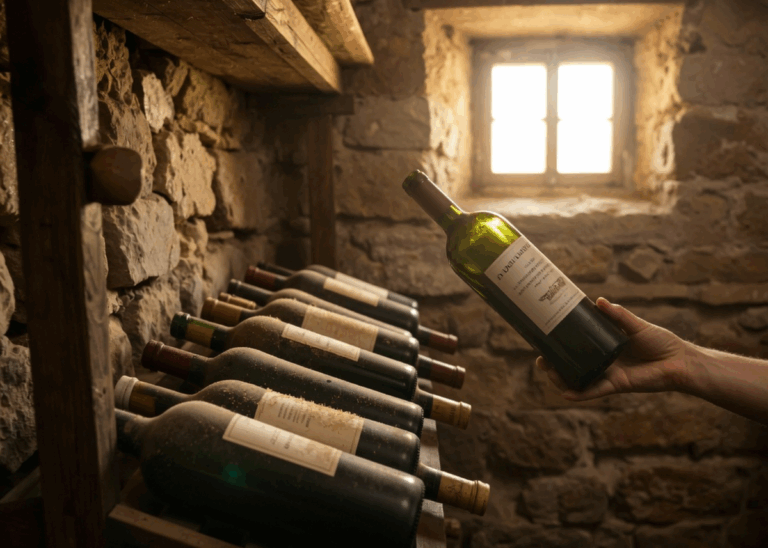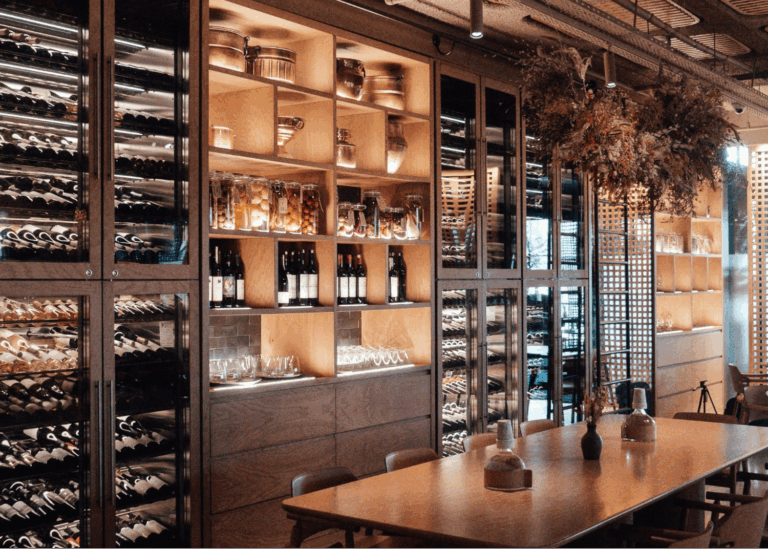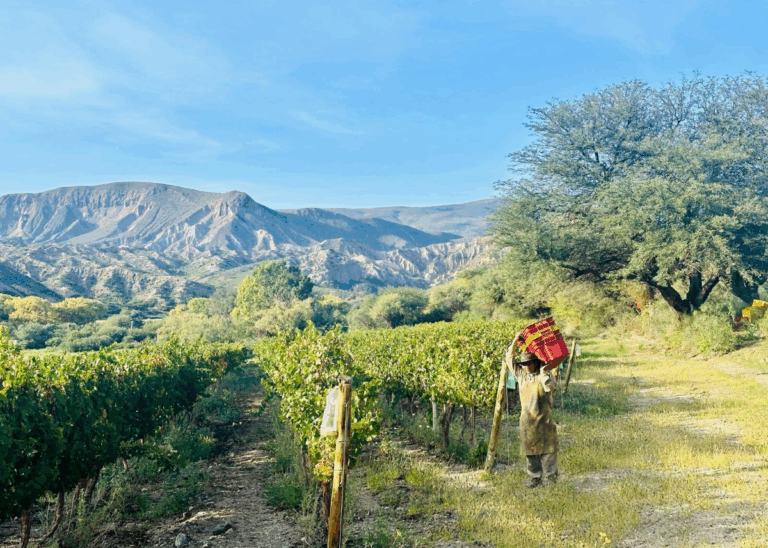[et_pb_section fb_built=”1″ admin_label=”section” _builder_version=”3.22.3″][et_pb_row admin_label=”row” _builder_version=”3.25″ background_size=”initial” background_position=”top_left” background_repeat=”repeat”][et_pb_column type=”4_4″ _builder_version=”3.25″ custom_padding=”|||” custom_padding__hover=”|||”][et_pb_text _builder_version=”4.3.2″]
Last week, we took you on a tour of two Australian vineyards: Langmeil, with its 19th century shiraz vines (the oldest in the world), and Helen & Joey and their cool pinot noir.
This week, we continue our journey into the antipodes with what is perhaps the strangest terroir in Australia… the legendary blood-red soil of Terra Rossa in the Coonawarra region.
More on that in a moment… But first, wine expert Julien Miquel tackles New Zealand, or, as the Māori call it, “The Land of the Long White Clouds”… including the “fruit bombs” of Central Otego… zingy sauvignon blancs from cool, wet vineyards… and the secret that gives each New Zealand wine its strong, complex scent (think herbs, tropical fruits, and foreign botanicals)…
[/et_pb_text][et_pb_video src=”https://youtu.be/q7hNsa9knj8″ thumbnail_overlay_color=”rgba(0,0,0,0.6)” _builder_version=”4.3.2″ width=”70%” module_alignment=”center” hover_enabled=”0″ module_id=”video”][/et_pb_video][et_pb_text _builder_version=”4.3.2″]
The Rusted Roots of Coonawarra (continued…)
Fly southeast from Adelaide along the coast, and after two hundred or so miles, you’ll fly over a thin, reddish strip cutting through the green of South Australia.
The coloring derives from iron oxide, which, when mixed with limestone, produces the rusty clay that gives Terra Rossa its name (from the Italian for “red earth”).
At the center of Terra Rossa sits the wine region of Coonawarra. It is widely considered one of the great New World terroirs, in part because of how the soil counteracts the climate, quickly sloughing off water into the swamps that fan out on both sides of the Terra Rossa strip.
[/et_pb_text][et_pb_image src=”https://bonnerprivatewines.com/wp-content/uploads/2020/04/Balnaves-TerraRossa.jpg” align=”center” _builder_version=”4.3.2″][/et_pb_image][et_pb_text _builder_version=”4.3.2″]
The Terra Rossa soil seen from below
The result is a microclimate similar to Bordeaux. Fittingly, the wine we came across there was a Bordeaux blend. Its maker, Peter Bissell, spent time working in St. Emilion and Pomerol before joining the Balnaves winery in Coonawarra in 1995.
Yet Coonawarra, and Balnaves along with it, is much more than a Bordeaux Down Under. For starters, Balnaves’ co-founder, Doug Balnaves, is the former president of the Coonawarra Guinea Pig Racing Association and an avid bagpipe enthusiast. In other words, Coonawarra doesn’t mind getting a little weird.
Unlike France, where wines from across a particular sub-region tend be highly uniform (sometimes by legal decree), Coonawarra’s wines zig and zag from terroir to terroir, introducing fascinating flavor and aromas you won’t find in other cabernets or merlots.
Visit Balnaves, and they’ll show you to their Wine Room, where you can look out over the whole beautifully intricate mess. At a nearby pond, birds splash around in the water. If you’re lucky, the 900 rose bushes will be in full bloom. As you munch on cheese and sample their wines, you might catch Doug walking the rows… his son Peter, head of viticulture, at his side. Or perhaps you’ll run into his daughter, Kirsty, buzzing around the winery offices…
In a country so thoroughly dominated by a handful of large commercial growers, it is refreshing to find a winery that feels like a family farm.
[/et_pb_text][et_pb_image src=”https://bonnerprivatewines.com/wp-content/uploads/2020/04/Balnaves-Vineyard.jpg” align=”center” _builder_version=”4.3.2″][/et_pb_image][et_pb_text _builder_version=”4.3.2″]
Balnaves feels like a family farm
Even the wine itself is kept firmly “on the farm,” eschewing the common Australian practice of mixing grapes from vineyards one doesn’t own.
At Balnaves, wines contain exclusively fruit. The fruit comes from a 140-acre vineyard, which is a patchwork of smaller, two-acre plots. From one plot to the next, vine trellis height and row direction vary wildly, as if the landscaper had been drinking on the job.
But the chaos is intentional. Doug and Peter evaluate plots each year, ever tweaking to maximize the interplay between soil, sun, and vine type.
Their wine, The Tally, is already considered a must-have for any self-respecting cabernet collection. Yet our palates were drawn toward another wine, the product of one of Doug’s aforementioned tweaks.
A few years ago, Doug and Peter changed one of their cabernet sauvignon plots to a mix of two different cab sauv vines, both of which originated at (separate) vineyards in the Gironde region of Bordeaux. They then mixed the cab sauv with merlot, cab franc, and petit verdot to produce a wine called, simply, The Blend (95 pts from Australian wine guru James Halliday).
[/et_pb_text][et_pb_image src=”https://bonnerprivatewines.com/wp-content/uploads/2020/04/Balnaves-Bottle.png” align=”center” _builder_version=”4.3.2″ width=”100%” height=”425px” height_tablet=”400px” height_phone=”350px” height_last_edited=”on|desktop”][/et_pb_image][et_pb_text _builder_version=”4.3.2″]
Specifically, we were drawn to the 2016 vintage, which is just now entering its prime drinking window. Among Australian wine watchers, 2016 is a well-known vintage – the year was mild, with cool nights powered by winds coming in off the ocean (just 37 miles to the south).
The main event here is the intense nose of berry, smoke, and coffee. Yet this wine knows when to pull back, remaining balanced on the palate with hints of bay leaf, blackcurrant, and what you might describe as spearmint, but is actually that tell-tale eucalyptus for which Australian wines are famous. A Bordeaux blend, perhaps… but one that’s not afraid to get a little weird.
Till next week,
The Wine Explorer
[/et_pb_text][/et_pb_column][/et_pb_row][/et_pb_section]



